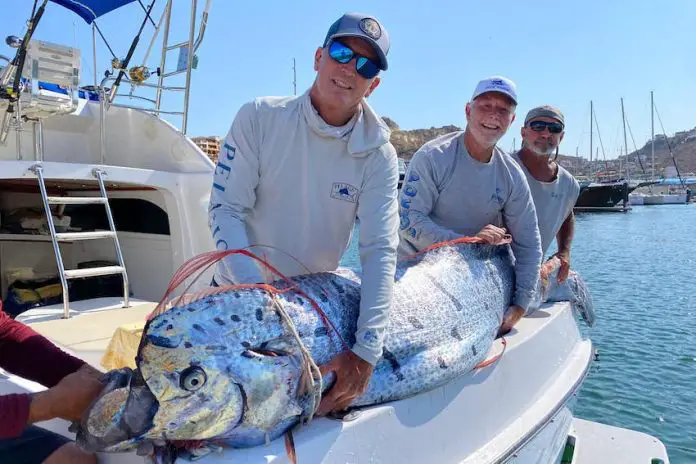On Tuesday, sports fishermen in Mexico’s Gulf of California caught a 3-meter-long oarfish, typically found only in deep waters. The creature’s sighting has sparked fascination in nearby communities, as it has a history of association with natural disasters and bad omens.
The oarfish was under attack by five sharks, according to the fishermen, when they spotted it off the coast of Cabo San Lucas. The 141-pound fish was snatched from the sharks by Tony Frasconi, who was fishing with friends identified as Ken and Gary.
Marine biologists took the specimen for further study.
The oarfish family includes three species of elongated fish found in temperate and tropical ocean zones, though they are not usually seen by humans, as they typically range only in the deep sea. Encounters with oarfish likely gave rise to tales of monstrous sea serpents over the centuries, though they are not dangerous to humans. Scientists believe that an oarfish sighting near the ocean’s surface indicates the creature is sick, dying or disoriented.
So far this year, two oarfish have washed up on the coasts of Baja California Sur. The first was spotted in mid-April, and the most recent was in early May in El Sargento. An oarfish was also spotted in the waters of Baja California Sur in July 2020, off the coast of La Paz.
Oarfish can be very large, with a ribbon-shaped body that resembles a snake more than a fish. The maximum reported length of the regalecus russelii species (reportedly the one found by the fishermen this week) is 5.4 meters, though the giant oarfish species can be as long as 17 meters.
The giant oarfish is considered the longest bony fish alive, according to the Guinness Book of World Records.
Some cultures around the world associate oarfish with natural disasters like earthquakes, tsunamis, cyclones and hurricanes, which has earned the animal the nickname “earthquake fish” or “doomsday fish.”
While sightings have coincided with these phenomena in various regions of the world, scientists have not found evidence to determine a relationship between oarfish sightings and subsequent natural disasters.
Oarfish inhabit the Pacific Ocean, with recorded sightings in Japan, the United States and Mexico.
With reports from Milenio and Baja California Sur Noticias
